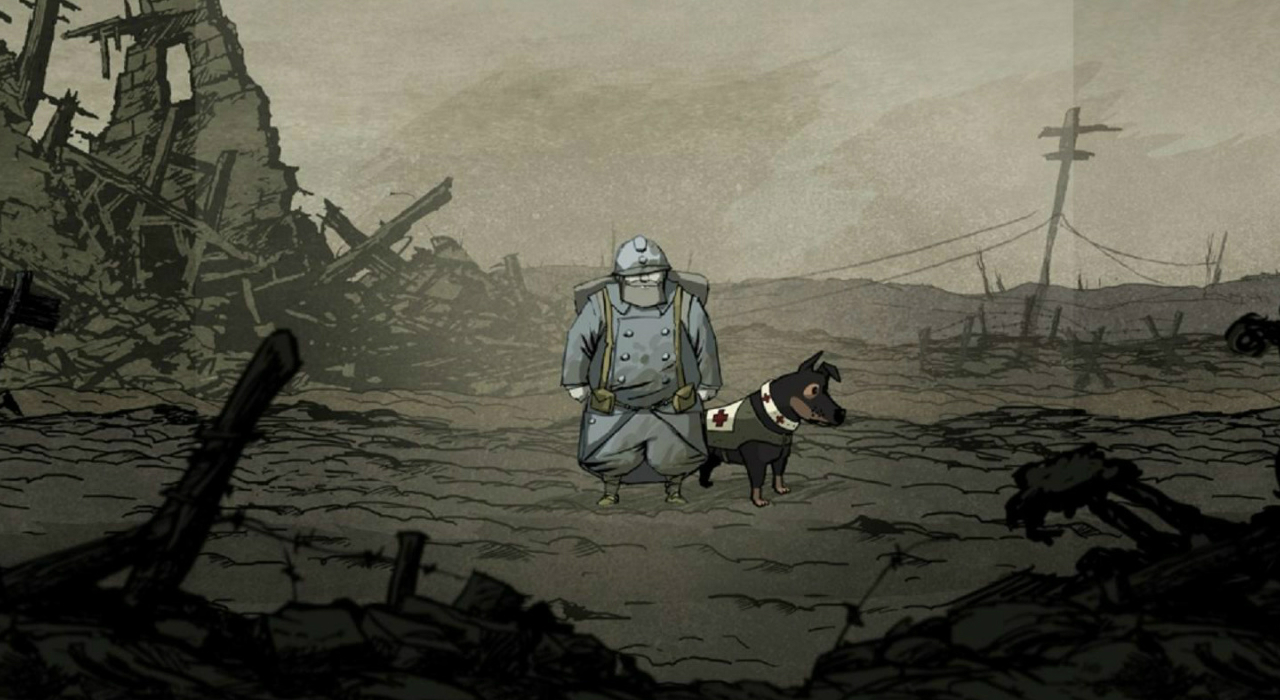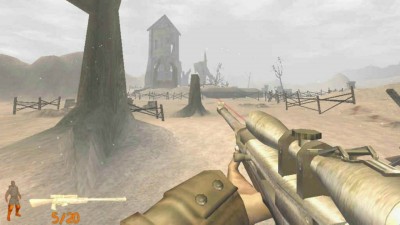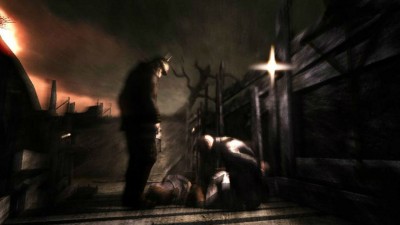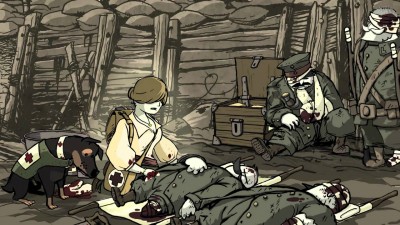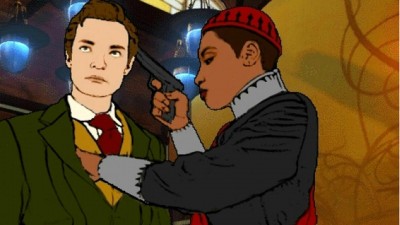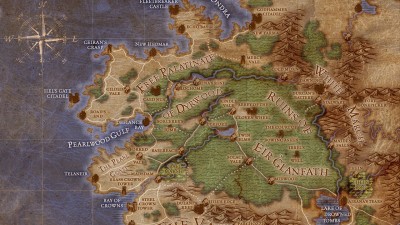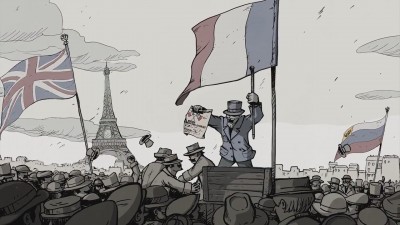As the centenary of the Great War approaches, it risks becoming a period overlooked or dismissed by many young people, who only hear about it in dusty textbooks or Wikipedia articles, rather than powerful dramatic or first-hand accounts of the horrors of the trenches. One way in which younger people could be exposed to - and possibly educated about - the era is through gaming, but it’s largely remained an untapped resource among the industry over the years.
Depending on who you ask, the First World War can be variously described as the definitive end of the age of empires, the true beginning of the 20th century, or the war to end all wars. Strange then, that such a historic event has largely been overlooked as far as the videogame industry is concerned, despite being richly mined in other creative mediums. With the exception of a few standouts, The Great War largely remains untouched ground. That’s a shame, since the events of the war - and the political intrigue surrounding it - make for an incredibly rich universe for players to interact with.
That’s not say that The Great War has been completely absent from videogames. From the soldiers’ uniforms of Bioshock Infinite, to the trench-and-bunker fights of war-torn DC in Fallout 3 - World War One has left an indelible mark on the art and themes of some of today’s best games. But with a few exceptions, developers have mostly resigned one of the most important moments within living memory to the history bin.
Practically speaking, the First World War presents a host of challenges to a potential game studio. While the themes of the war - trenches, mustard gas, machine guns, and mud - have left a powerful image in public memory, those elements do not necessarily make for exciting gameplay. Trench warfare, by all accounts of those who lived through it, was cold, miserable, and filled with disease. It was also exceedingly boring. Because so many video game genres depend on motion and tension to hold the player’s interest, trenches tend to make for tedious gameplay. When 4X Studio’s Ironstorm - a first-person-shooter set in an alternate timeline where the First World War had never ended - was released in 2002, the game received criticism for its monotonous trench segments.
And then there’s the era’s cumbersome (by modern standards) weaponry. When the Call of Duty series ditched the Second World War in favor of a fictional modern setting, switching from bolt-action rifles to high-powered automatic assault rifles felt like a breath of fresh air. Indeed, most shooters set during the 1910’s, such as Bioshock Infinite (set two years before the historical start of the Great War), use science-fiction as an excuse to give the player more modern weaponry.
Things are not much better on the Real Time Strategy front. While the technology of the day could be fantastic fun in an RTS (can you say Zeppelin bombers?), much of the First World War was characterized by drawn out campaigns wherein fighting boiled down to a war of attrition and gunfire exchanged across two opposite ditches dug into the mud. The introduction of tanks, biplanes, and mustard gas could help move things along, but it is hard to see how a WWI strategy game would break new ground over existing titles like Company of Heroes.
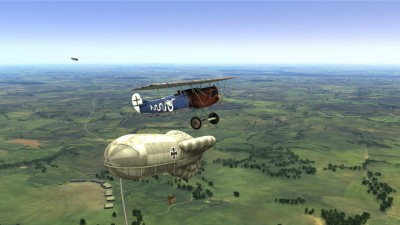
Rise of Flight
Arguably, the war in the skies provides the best setting for strategy based games. To that end, Rise of Flight is probably one of the best videogames out there about The Great War, and arguably one of the best flight sims on the market today. The wire-and-canvas biplanes you do battle in feel antiquated and downright suicidal, when compared to the aircraft in something like IL2 Sturmovik. That’s what makes them so much damn fun. Little details, like the way you’ll hear the wind rushing past your helmet if you move your view around in the cockpit, really add to the sense of immersion. If you’re not careful, you’ll rip one of your own wings off maneuvering too hard. With enough dedication, Rise of Flight can be incredibly moving and rewarding—it’s incredibly sobering to fly over the vast array of blackened earth as you cross no-man’s-land.
But this raises another issue: the question of morality. During the heyday of games set during the Second World War - the Medal of Honor series, Call of Duty and its sequels, and Company of Heroes - very little attention was given to why you fought the Nazis. They presented almost the perfect videogame enemy - one that was challenging, tactically advanced, identifiably evil and with an iconic aesthetic - but more importantly, the player felt no real moral qualms over mowing down wave after wave of SS footsoldiers.
But how do you sell the combatants of the First World War as enemies? Even at the time many considered the war something of a farce - a war of empire hastily rushed into out of militarism, bruised egos and a failure of diplomacy.
For that reason, some of the best videogames about the First World War only use the war as a backdrop, or re-imagine the conflict entirely to suit the story’s purpose.
Take the Otherworld levels of Starbreeze Studios’ 2007 shooter The Darkness. While most of the game has you killing mobsters in New York City with your demonic powers, two chapters take place in a hellish vision of the war in the trenches, seemingly inspired by the memories of the protagonist’s great-great-grandfather. The environments work because the player knows they’re in an alternate reality, one born from the twisted psyche of a man who chose demonic possession over a bloody death in the trenches. Yet on another level, the Otherworld feels like a perfect representation of The Great War because it’s a distorted vision of history. The demonic soldiers and city-block-sized cannons are anchored in reality by real recruitment posters fading into the walls of a friendly village you pass through. All of the players’ allies are mutilated beyond recognition, stitched back together and still fighting because the Darkness will not allow them to die. Giant demon arms aside, it’s one of the most compelling visions of modern war ever brought to digital life.
Likewise, Ubisoft’s puzzle side-scroller Valiant Hearts: The Great War uses the events of the war to interweave four storylines, all connected by a faithful hospital dog. Notably, the game sidesteps the thorny issue of having the player fight for one side or the other, and instead features stories from both sides of the trenches—the main story follows all the protagonists’ attempts to reunite a captured German soldier with his love. It’s a new approach to telling a war story through videogames, something that is (hopefully) a change of pace from what we’re used to seeing in the medium.
It’s not an entirely new way of examining the First World War through a video game, however. Back in 1997, Smoking Car Productions’ The Last Express threw players into a point-and-click adventure aboard a hijacked train, mere days before the outbreak of war in Europe. You assume the role of Robert Cath, an American doctor sought by the police in connection with a murder. Also aboard the train is a powder-keg of mixed personalities - Russian nobles, a German arms dealer, anarchists, Serbian agents, and a beautiful socialite. By pulling the player out of the direct conflict, The Last Express allows the player to explore the political intrigue surrounding the war through a keyhole perspective. That’s important, because the First World War was not only a war of the trenches, but also of ideas and propaganda, intrigue, and subterfuge. Games like The Last Express allow us to consider that, outside of the mud and bloody trenches.
Just as the First World War altered the course of the 20th century, the sights, sounds, and ideas of the war have had a profound effect on gaming - but it’s an effect which has mostly been indirect. While only a handful of developers have set their games during The Great War, those that have created some truly fantastic games. Despite the lasting memories of the war, it remains largely untouched in mainstream games. We can only hope that studios give the era another look—to challenge our conceptions of war, and gaming as an art.
